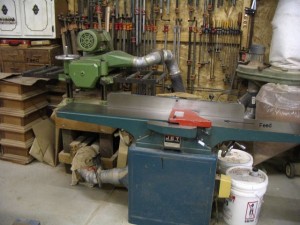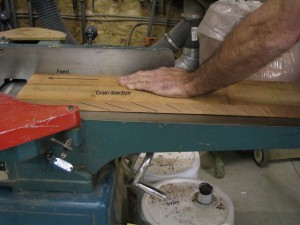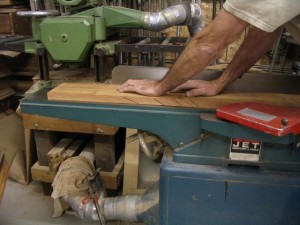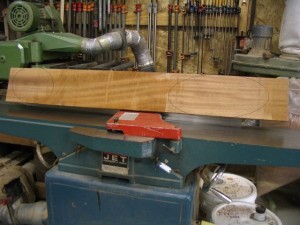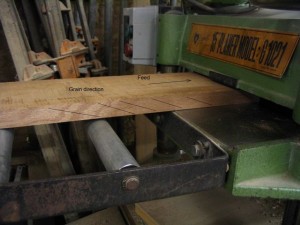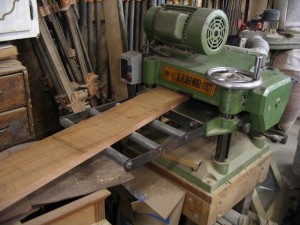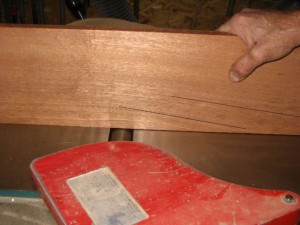Before any rough sawn lumber can be used it must first be properly dimensioned. In order to build square cabinets and flat components for your woodworking projects, the lumber must be flat, have opposing faces parallel and square to the adjoining edges.
The jointer and thickness planer were designed specifically to do this job accurately, but must be used together. Neither machine can do the job separately. In the first image you’ll notice how I have the two machines positioned. As I’ll describe shortly this arrangement allows the machines to be used without reorienting the boards for proper grain direction.
The jointer is the first machine to be used; but before doing so you’ll need to decide which way each board is to be fed through the machine. The boards must be oriented so that the concave side is down on the table and the grain is running up over the cutter, which will be under the board. If the grain is going the wrong way it will tear out.The next image shows a board just beginning to enter the cutter. Notice the grain direction and the bow of the board under my left hand.
After the board is about a foot over the cutter, reposition your hands on the out feed table. This is the reference surface where the final cut will flatten the face. Feed the board slow and steady. Too slow may leave burn marks, especially on cherry, and too fast will leave chatter marks.
Repeat the process until the majority of the jointed face has been cleaned up. It is not necessary to completely clean up the face. The thickness planer will do the remaining cleanup. See the next image.
After all your boards are jointer on one face they will need to be put through the thickness planer. The cutter will be over the board this time so now the grain direction must by going downhill. If the machines are oriented such as mine, the board does not have to be flipped around after the jointing process to properly orient the grain direction.
In order to evenly wear the blades, run the boards through on an angle to use the entire width of the table.
After one edge is jointed straight, the opposite edge can be trued up on the table saw. Your lumber is now flat, square and parallel and ready to build a well-made piece of furniture.

